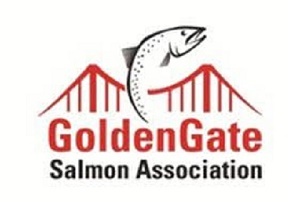Saltwater Fish Report for 7-10-2018
Water Board Announcement Leaves Little Surplus Water for Tunnels, New Reservoirs
by GGSA Staff
7-10-2018

On July 6 the State Water Resources Control Board announced water diversions from Central Valley rivers will need to be reduced in order to save the Bay-Delta from ecological collapse. This announcement has sobering consequences for future large water diversion projects. Among these, the twin Delta tunnels and any expensive above ground reservoir projects that would rely on new diversions.
The water board announced it will seek about 55 percent of unimpaired flows from the Sacramento Valley. This requires a significant reduction in diversions that is expected to provide around two million acre feet of additional flow through the Delta and Bay each year. Steep declines in salmon populations in recent years are a stark reminder that diversions have gotten beyond what nature can sustain. Recent outbreaks of toxic blue green algae in the Delta are another sure sign that over-diversion of the rivers has left the Delta little more than a stagnant cesspool in some years.
The water board’s announcement is certain to reduce the amount of water that the Delta twin tunnels could legally divert. While the cost to build the tunnels remains the same, the volume of water available for delivery will decline. Clearly, this announcement demonstrates that the current proposal is economically infeasible and that the Metropolitan Water District of Southern California (MWD) should reevaluate the project.
“The fantasy that a $17 billion dollar investment in the tunnels would lead to more water diversions died with the July 6 water board announcement”, said GGSA director Mike Aughney. “From a business perspective, the twin tunnels project is a dog.”
“GGSA has always held that the state Dept. of Water Resources and MWD should wait until the State Board adopted new flow requirements before finalizing the tunnels project,” said GGSA president, John McManus. “The State Board announcement shows why that is still the right path forward.”
In addition, those hoping to divert more Sacramento River water upstream into new, expensive reservoirs, like the Sites proposal, are now facing far more constraints on when they can divert. Although the water board’s announcement is not yet a legal limit on diversions, it’s a strong signal to water users to plan for a future where the rivers will carry more natural flow.
“The science is clear. Baby salmon don’t survive to the ocean without river water to carry them there,” said GGSA director David Zeff. “Salmon fishing communities don’t survive either which is why we’re glad to see the state board’s announcement pointing to a new, more responsible direction.”
The Golden Gate Salmon Association is a coalition of salmon advocates that includes commercial and recreational salmon fisherman, businesses, restaurants, a native tribe, environmentalists, elected officials, families and communities that rely on salmon. GGSA’s mission is to protect and restore California’s largest salmon producing habitat comprised of the Central Valley river’s that feed the Bay-Delta ecosystem and the communities that rely on salmon as a long-term, sustainable, commercial, recreational and cultural resource.
Currently, California’s salmon industry is valued at $1.4 billion in annual economic activity and $700 million in economic activity and jobs Oregon in a normal season. The industry employs tens of thousands of people from Santa Barbara to northern Oregon. This is a huge economic bloc made up of commercial fishermen, recreational fishermen (fresh and salt water), fish processors, marinas, coastal communities, equipment manufacturers, tackle shops and marine stores, the hotel and food industry, tribes, and the salmon fishing industry at large.
The Golden Gate Salmon Association is a coalition of salmon advocates that includes commercial and recreational salmon fisherman, businesses, restaurants, a native tribe, environmentalists, elected officials, families and communities that rely on salmon.
GGSA’s mission is to restore California salmon for their economic, recreational, commercial, environmental, cultural and health values.
Currently, California’s salmon industry is valued at $1.4 billion in economic activity annually in a regular season and about half that much in economic activity and jobs again in Oregon. The industry employs tens of thousands of people from Santa Barbara to northern Oregon. This is a huge economic bloc made up of commercial fishermen, recreational fishermen (fresh and salt water), fish processors, marinas, coastal communities, equipment manufacturers, the hotel and food industry, tribes, and the salmon fishing industry at large.
More Reports
Golden Gate Salmon Association Hosts Ladies-Only Fishing Trip

6-19-2018
The Golden Gate Salmon Association (GGSA), a coalition of salmon advocates working to protect and restore California’s largest salmon runs, today announced...... Read More
Sport Salmon Season from San Mateo to Humboldt Set to Open Sunday

6-13-2018
The Golden Gate Salmon Association welcomes the opening of the 2018 sport salmon fishing season Sunday, June 17 in coastal waters south of Horse...... Read More

Website Hosting and Design provided by TECK.net